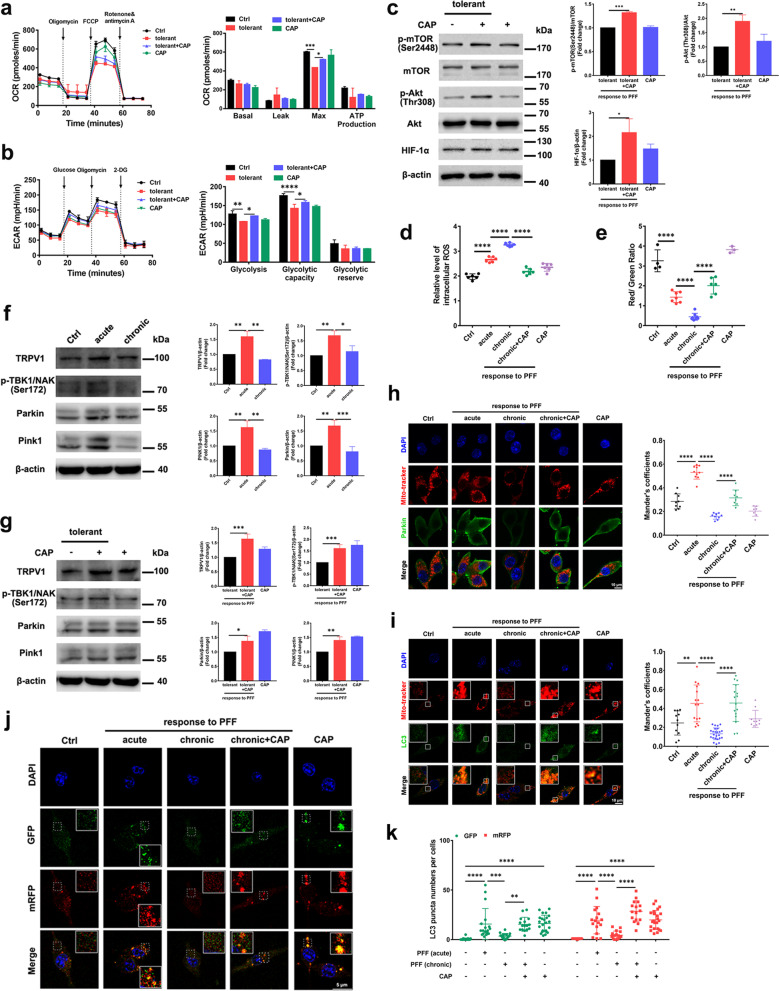Fig. 2.
Capsaicin rescues impaired cellular metabolism and mitophagy via mTOR pathway in PFF-tolerant microglia. a Oxidative phosphorylation determined by measuring OCR and b glycolysis determined by measuring ECAR in tolerant PFF-treated microglia after exposure to vehicle or capsaicin (n = 3 per group). c Immunoblot analysis of mTOR pathway components in tolerant PFF-treated microglia after exposure to vehicle or capsaicin (n = 3 per group). d Quantification of mitochondrial membrane depolarization monitored by JC-1 MitoProbe (n = 6, biological replicates). e Intracellular ROS levels in microglia (n = 3–7, biological replicates). f, g Immunoblots and quantification of TRPV1, p-TBK1/NAK (Ser 172), Parkin, PINK1 and β-actin in PFF-tolerant cells after incubation with capsaicin (n = 3, biological replicates). h, i Representative fluorescent images and quantification of percentage colocalization of Mito-tracker (red) with Parkin (green) h or LC3 (green) i in PFF-tolerant microglia after incubation with capsaicin (n = 3, biological replicates). Scale bar, 10 μm. j Representative fluorescent images and k quantification of LC3 puncta examined using mRFP-GFP-LC3 plasmid transfection for 48 h in microglia (n = 3, biological replicates). Scale bar, 5 μm. One-way ANOVA with Tukey’s multiple comparisons test was used for statistical analysis. Error bars represent mean ± SD. *p < 0.05, **p < 0.01, ***p < 0.001, ****p < 0.0001

